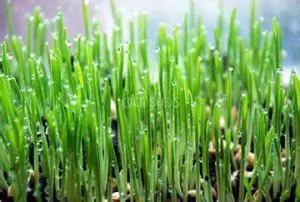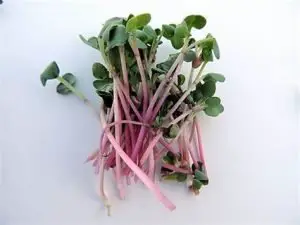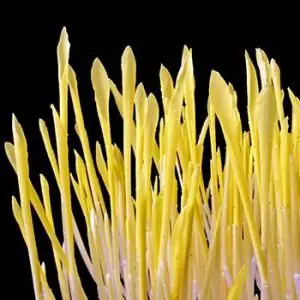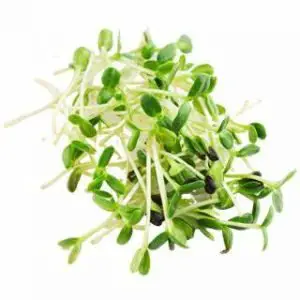Contents
One of the benefits of growing microgreens indoors is that it only takes a couple of weeks to grow your food, regardless if you have your own business or are simply doing it for fun. While most common varieties of microgreen seeds grow faster than conventional crops, some types have a fast turnaround time. As a result, many urban farmers started their microgreens business at home and made a living out of it by producing fresh living greens for salads, soups, and sandwiches.
Growing Microgeens
Microgreen seeds can be planted the same way you can plant other herbs and vegetable seeds. Sprouted seeds will need to germinate quickly in potting mix to avoid rotting. For microgreens to thrive, about four hours of direct sunlight (such as a sunny windowsill) are required daily. During the winter months, supplemental light like a bright light may be needed. Almost any type of shallow tray can be used for growing flats of microgreens.
They are usually planted in soil mediums or substitutes, and harvested before full size. Varieties of microgreens are harvested when the first pair of true leaves (seed leaves) has fully opened and has begun to turn green. These are great if you want a higher concentration of vitamins and varieties of flavors compared to mature vegetables and herbs!
This blog post discusses the fast-growing microgreens and how to grow them!
Wheatgrass
 Many people have started adding wheatgrass juices and smoothies to their diets as a healthy supplement. Smoothie shops usually have a tray of what looks like grass sitting on their counter, but there is something special about freshly harvested wheatgrass. Cats and dogs can also benefit from munching on wheatgrass. It is also worth noting that you can replicate the optimal experience at home.
Many people have started adding wheatgrass juices and smoothies to their diets as a healthy supplement. Smoothie shops usually have a tray of what looks like grass sitting on their counter, but there is something special about freshly harvested wheatgrass. Cats and dogs can also benefit from munching on wheatgrass. It is also worth noting that you can replicate the optimal experience at home.
It takes 8 to 10 days for wheatgrass seeds to be ready to harvest. Wheatgrass can be ready in as little as 6 days if the conditions are just right. The plants will be about 8 inches tall. Growing wheatgrass requires access to plenty of sunlight. Otherwise, it will not develop a deep green color.
It is essential to soak wheatgrass seeds in water for at least eight hours before sowing them. The more moisture the seeds get, the more likely they have true leaves form. Some trays of microgreens can grow back after being cut, including wheatgrass. Second harvests are generally less nutritious than the first and take longer to grow.
Radish Microgreens
 Radish microgreens are probably one of our favorite types of microgreens. They are surprisingly spicy and go great on tacos and sandwiches. Radish microgreens are extremely easy to grow and can be harvested in 8 to 12 days after sowing the seeds. Radish microgreens can even be harvested 5 days after planting when using a heat mat or elevating the room temperature.
Radish microgreens are probably one of our favorite types of microgreens. They are surprisingly spicy and go great on tacos and sandwiches. Radish microgreens are extremely easy to grow and can be harvested in 8 to 12 days after sowing the seeds. Radish microgreens can even be harvested 5 days after planting when using a heat mat or elevating the room temperature.
Several sources suggest that radish microgreens must be soaked in cold water before sowing the radish seeds. However, we have grown radish microgreens both with soaked seeds and dry seeds. Not much difference was observed between the harvests.
Corn Shoots
 Corn shoots are considered the fastest and easiest-to-grow microgreens on this list. They can grow tiny root hairs 6 to 8 days after sowing seeds.
Corn shoots are considered the fastest and easiest-to-grow microgreens on this list. They can grow tiny root hairs 6 to 8 days after sowing seeds.
When we tried corn shoots, we were surprised by their sweetness and found it quite difficult to use such sweet plants in cooking. We do recommend growing corn shoots as a science experiment for beginners and brand new growers. Even though the taste isn’t for everyone, you can grow corn shoots instead of expensive seeds from popcorn kernels purchased at the supermarket.
Another interesting fact about growing corn shoots is that their entire growth cycle occurs in darkness. The lack of sunlight gives these plants their yellow color.
In addition to the taste of corn shoots changing from sweet to bitter when exposed to adequate sunlight, you need to eat corn shoots quickly because they become more bitter and tough as they mature.
Sunflower Microgreens
 One of the most popular microgreens sold is sunflower microgreens. These microgreens have a delicious crunch and a nutty flavor, making them great on sandwiches such as the classic egg sandwich, salads, smoothies, etc.
One of the most popular microgreens sold is sunflower microgreens. These microgreens have a delicious crunch and a nutty flavor, making them great on sandwiches such as the classic egg sandwich, salads, smoothies, etc.
Sunflower microgreens are ready for harvest time 7 to 10 days after sowing the seed. If you fail to harvest the young seedlings within this time, fuzzy shoots will appear on the top of the microgreens.
Although they are still edible, they are fuzzy in texture, something that can put some people off. Because sunflower microgreens come from large seeds, soaking them in lukewarm water for 8 to 12 hours before planting makes them a healthier plant. Uncover your shallow containers daily and mist your seed raising mix once or twice with a spray bottle to keep the soil moist. This will improve germination time significantly.
Sunflower microgreens are not only delicious but also packed with nutrition. Researchers found that microgreens are four to forty times more concentrated with nutrients than their mature counterparts.
Cabbage Microgreens
 Typically ready to harvest in 8-10 days, cabbage microgreens are trendy microgreens that grow quickly and are the best microgreens for beginners. Several other types of Brassica microgreens, including pak choi, mustard, and brussels sprouts, can be harvested within 8-12 days after planting seeds.
Typically ready to harvest in 8-10 days, cabbage microgreens are trendy microgreens that grow quickly and are the best microgreens for beginners. Several other types of Brassica microgreens, including pak choi, mustard, and brussels sprouts, can be harvested within 8-12 days after planting seeds.
These fresh greens or baby greens can be added to salads and sandwiches. Their mild cabbage flavor makes them a great addition to fish tacos and Asian dishes.
As a garnish, cabbage microgreens can be used together with other vegetables. Red cabbage microgreens are particularly eye-catching and add color to salads.
In addition to being delicious, cabbage microgreens are also good for you! In 2016, researchers in Maryland determined that red cabbage microgreens may lower the risk of coronary artery disease by lowering blood cholesterol levels. You don’t need to soak the organic seeds before planting, unlike sunflower microgreens.
Coco coir, potting soil, or hydroponic growing medium works well for growing cabbage microgreens. You will typically see germination after two to three days.
Slow-growing Microgreens
Here are some of the slowest-growing and most difficult, fresh microgreens that need extra time:
- Anise (7-20 days)
- Basil (12-18 days)
- Carrot (14-20 days)
- Cilantro (21-28 days)
- Thyme (5+ weeks)

